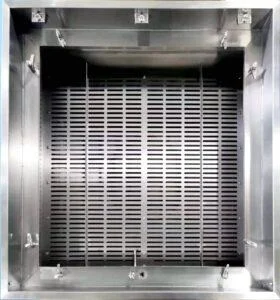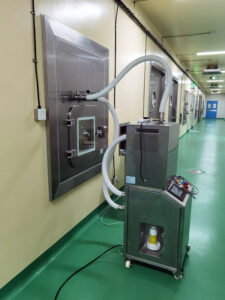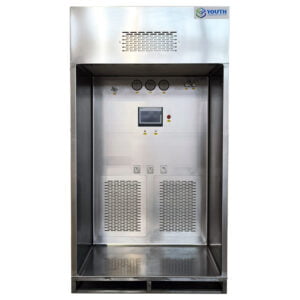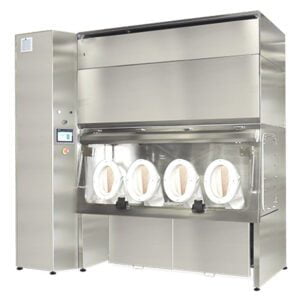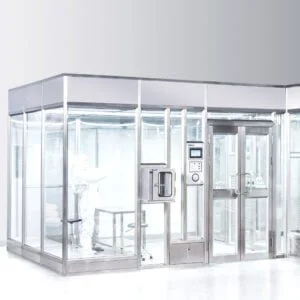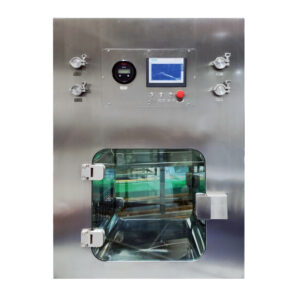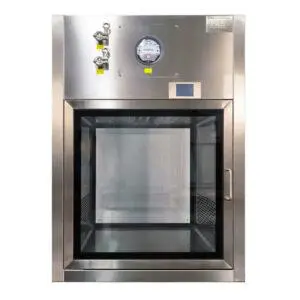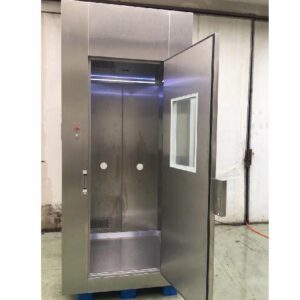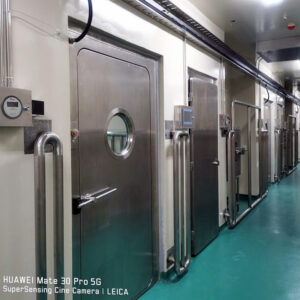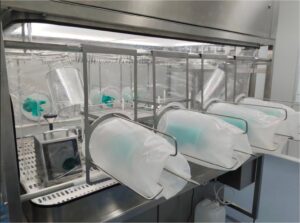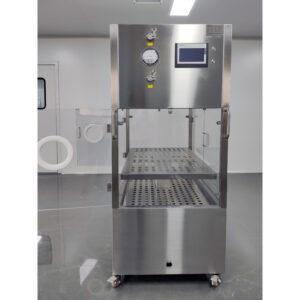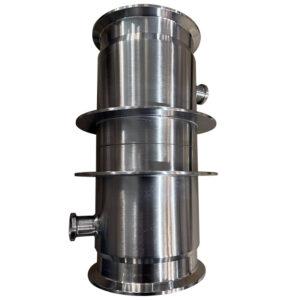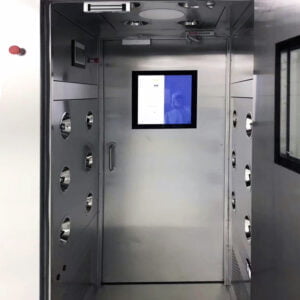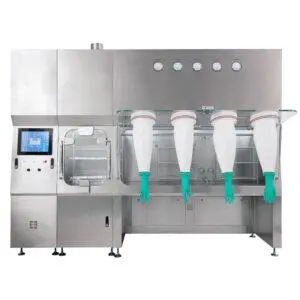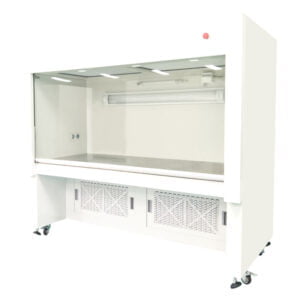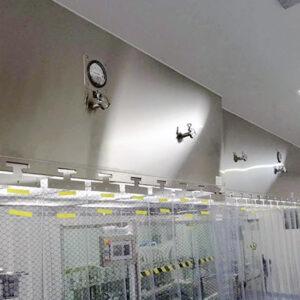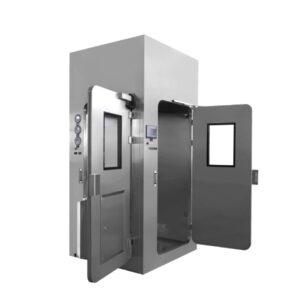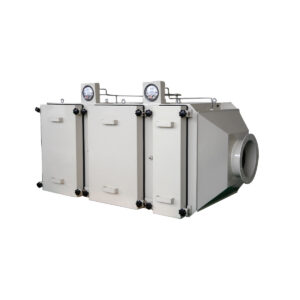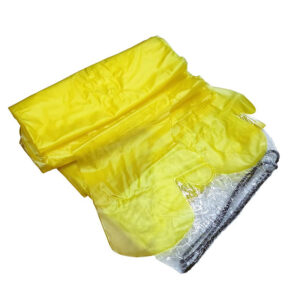When handling hazardous APIs, cytotoxic compounds, or high-potency materials, standard containment bags create unacceptable exposure risks. Bag in Bag out Barrier Bags / BIBO Containment Bags provide the validated containment solution pharmaceutical manufacturers, biotech facilities, and research laboratories need for regulatory compliance and operator safety. These engineered barrier systems eliminate direct contact with contaminated filters and materials while maintaining sterile processing environments.
BIBO Containment Technology: Engineering Safe Material Handling
Primary Barrier Systems
Bag in Bag out Barrier Bags / BIBO Containment Bags integrate seamlessly with HEPA/ULPA filtration systems to create complete containment solutions. The dual-bag design enables safe filter changeouts and waste removal without operator exposure to hazardous materials.
High-Containment Filter Integration:
- Compatible with H13-U17 HEPA/ULPA filters for 99.97%-99.999995% efficiency
- Engineered sealing systems prevent bypass leakage during bag changes
- FDA-approved materials suitable for pharmaceutical manufacturing environments
- Validated performance in OEL environments down to <1 μg/m³
Barrier Material Construction:
- Multi-layer films with puncture resistance exceeding 200g force
- Antistatic additives prevent particle attraction and discharge
- Chemical compatibility with common pharmaceutical solvents and cleaning agents
- Temperature stability from -40°C to +80°C for diverse applications
Complete BIBO System Components
Containment Housings: Stainless steel construction with crevice-free design for easy decontamination. Integrated bag clamping systems ensure positive sealing without operator contact with contaminated surfaces.
Safe-Change Mechanisms: Engineered bag-in/bag-out procedures enable filter replacement and waste removal while maintaining containment integrity. Validation protocols demonstrate <0.1% leakage rates during change procedures.
Integration Capabilities: Compatible with existing cleanroom HVAC systems, laminar flow units, and biosafety cabinets. Custom configurations available for retrofit installations and new construction projects.
| BIBO System Specifications | Performance Parameters |
|---|---|
| Containment Efficiency | >99.9% during change procedures |
| Filter Compatibility | H13-U17 HEPA/ULPA filters |
| Operating Temperature | -40°C to +80°C |
| Bag Material | Multi-layer pharmaceutical grade |
| Validation Support | IQ/OQ/PQ documentation included |
| Regulatory Compliance | FDA, EMA, OSHA standards |
▶ Get Technical Specifications ◀
Material Performance & Validation Data
Containment Efficiency Testing
| Test Parameter | Standard Method | Performance Result |
|---|---|---|
| Particle Containment | ISO 14644-3 | >99.9% retention |
| Bag Integrity | ASTM F1929 | Zero penetration at 200g force |
| Seal Performance | Custom protocol | <0.1% leakage rate |
| Chemical Compatibility | ASTM D543 | Compatible with 95% of pharma solvents |
Material Specifications
| Property | Specification | Validation Method |
|---|---|---|
| Film Thickness | 6-mil minimum | ASTM D6988 |
| Puncture Resistance | >200g force | ASTM F1306 |
| Tensile Strength | >25 MPa | ASTM D882 |
| Antistatic Properties | <10¹¹ ohms surface resistance | ASTM D257 |
| Energy & Operational Data | Measurement | Industry Comparison |
|---|---|---|
| Pressure Drop Impact | <25 Pa additional | 40% lower than alternatives |
| Filter Life Extension | 15-25% increase | Due to protected environment |
| Change-out Time | 15-20 minutes | 60% faster than glovebox systems |
| Training Requirements | 4-hour certification | Standardized procedures |
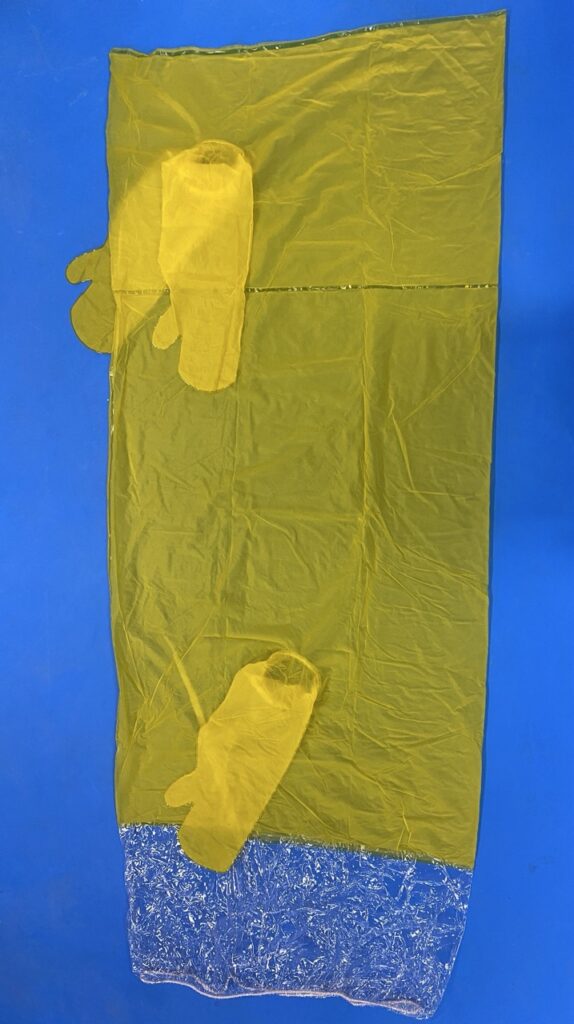
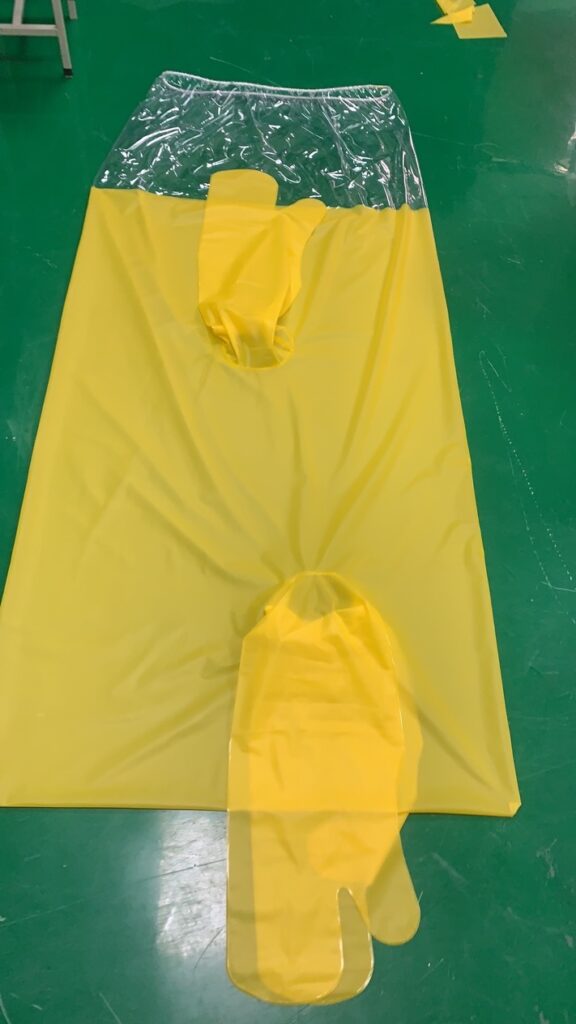
BIBO Containment Bags – Professional PVC Isolation Solution
Our PVC BIBO (Bag-In-Bag-Out) Containment Bags provide reliable containment for hazardous material handling applications, featuring durable construction and user-friendly design for safe operations.
Product Specifications
| Feature | Specification |
|---|---|
| Material | PVC (Polyvinyl Chloride) |
| Dimensions | 592 × 592 × 292H mm (customized) |
| Thickness | 0.2mm |
| Color Scheme | Yellow + Transparent |
| Glove Ports | 2 integrated gloves ( 2 to 4 gloves customized) |
| Contact Arc Length | 1962mm |
Key Features
- Dual-Layer Protection: Yellow and transparent PVC construction provides visual monitoring while maintaining containment integrity
- Ergonomic Design: Features 592mm width and 292mm height for optimal workspace access and material handling
- Integrated Glove Ports: Equipped with 2 glove attachments with 1962mm contact arc length for extended reach and flexibility
- Durable Construction: 0.2mm thickness ensures puncture resistance and long-term reliability
Packaging Information
- Units per Carton: 5 bags
- Carton Dimensions: 40 × 40 × 60 cm
- Total Weight: Approximately 12 kg per carton
Proven Applications Across Critical Industries
Pharmaceutical Manufacturing: API and Sterile Production
High-potency API manufacturing requires containment solutions that protect operators while maintaining product quality. Bag in Bag out Barrier Bags / BIBO Containment Bags enable safe handling of cytotoxic compounds, hormones, and sensitizing materials in GMP environments.
Sterile Manufacturing Applications:
- Aseptic processing areas maintaining ISO 5 cleanliness
- Fill-finish operations requiring both sterility and containment
- Lyophilization chambers with hazardous product exposure potential
- Quality control laboratories testing high-potency compounds
“BIBO containment systems reduced operator exposure incidents by 94% while maintaining sterile processing requirements in cytotoxic manufacturing.” —International Society for Pharmaceutical Engineering
Validation Success Metrics:
- Zero containment failures across 1,200+ filter changes
- 99.7% reduction in measurable operator exposure
- 100% regulatory inspection compliance over 3-year validation period
- 23% reduction in filter replacement costs through protected filtration
Biotechnology Research: Cell Culture and Fermentation
Research laboratories handling genetically modified organisms, viral vectors, and recombinant proteins require containment systems that adapt to changing protocols while ensuring consistent safety performance.
Research Facility Integration:
- Biosafety cabinet exhaust filtration with safe filter disposal
- Fermentation off-gas treatment maintaining organism containment
- Cell culture waste processing without cross-contamination risk
- Pilot plant operations bridging laboratory and manufacturing scales
Hospital Pharmacies: Hazardous Drug Compounding
USP <800> compliance requires engineered controls for hazardous drug preparation. BIBO systems provide the validated containment necessary for antineoplastic and reproductive toxin handling.
Healthcare Applications:
- Pharmacy compounding areas meeting USP <800> requirements
- Oncology preparation rooms with cytotoxic drug exposure
- Nuclear pharmacy operations requiring radiological containment
- Research hospital laboratories with investigational compounds
Installation & Validation: Regulatory Compliance Made Practical
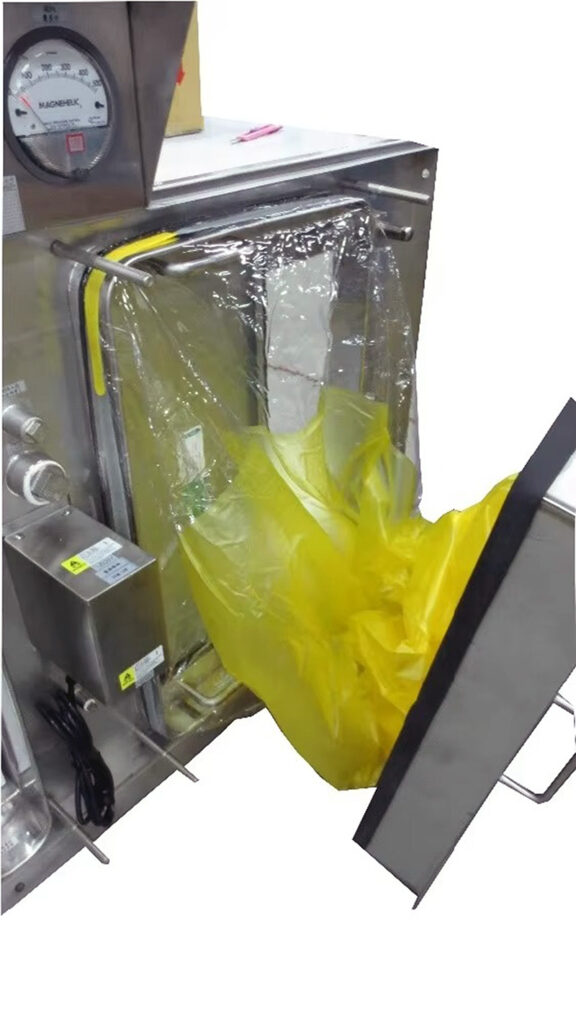
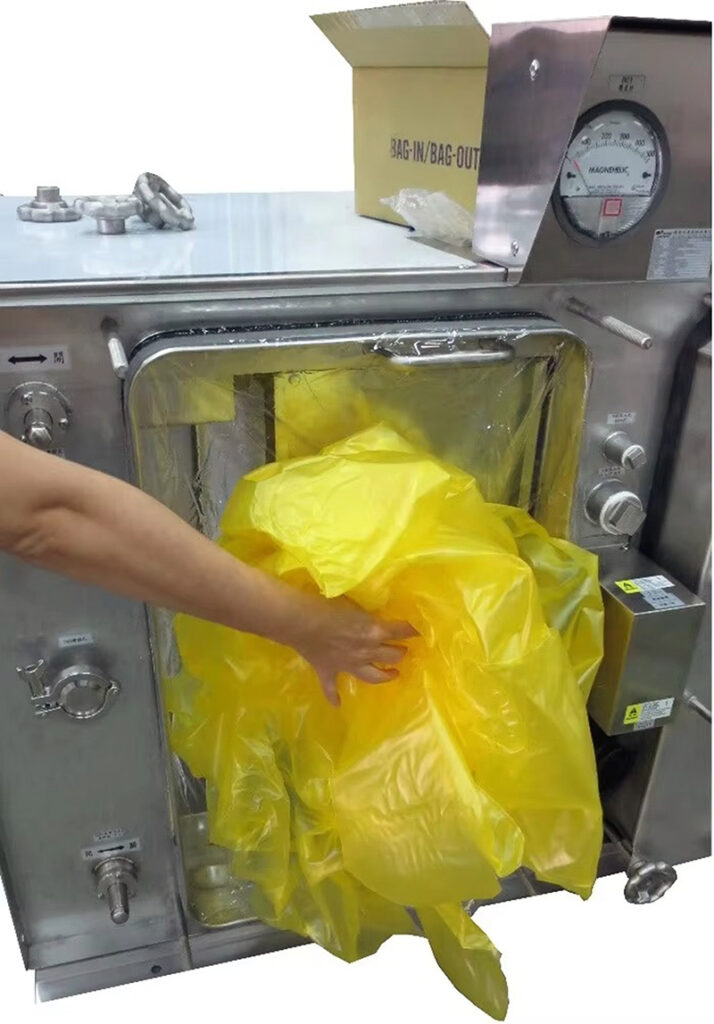

Comprehensive Validation Protocols
Documentation Packages: Complete IQ/OQ/PQ protocols specifically designed for pharmaceutical and biotechnology applications. Validation procedures demonstrate containment performance, operational reliability, and regulatory compliance.
Performance Qualification Testing:
- Containment efficiency verification during normal operations
- Challenge testing with surrogate materials simulating actual compounds
- Operator exposure monitoring during bag change procedures
- Long-term reliability testing over 500+ change cycles
Regulatory Compliance Support
FDA Compliance: Systems designed to meet 21 CFR Part 211 requirements for containment and operator protection. Validation documentation supports regulatory inspections and compliance audits.
International Standards: Compliance with EMA guidelines, WHO GMP requirements, and local pharmaceutical regulations. Technical files support global registration and validation requirements.
OSHA Integration: Hazard assessment support and exposure control validation meeting 29 CFR 1910.1000 series requirements for workplace safety.
| Validation Timeline | Activity | Documentation Delivered |
|---|---|---|
| Week 1-2 | Site assessment and design verification | Installation specification |
| Week 3-4 | Installation qualification (IQ) | IQ protocol and results |
| Week 5-6 | Operational qualification (OQ) | OQ protocol and performance data |
| Week 7-8 | Performance qualification (PQ) | Final validation report |
Frequently Asked Questions
Q: How do BIBO containment bags compare to traditional glovebox systems for pharmaceutical applications?
A: BIBO systems offer several advantages: 60% faster change-out procedures, lower installation costs, easier validation, and better integration with existing HVAC systems. While gloveboxes provide superior containment for research applications, BIBO systems excel in production environments requiring frequent filter changes and high operational efficiency.
Q: What validation documentation is required for FDA compliance?
A: Complete validation requires IQ/OQ/PQ protocols demonstrating containment efficiency, operational reliability, and operator safety. We provide standardized protocols meeting 21 CFR Part 211 requirements, including containment testing, change procedure validation, and long-term performance monitoring. Documentation packages support regulatory inspections and compliance audits.
Q: Can BIBO systems handle highly potent compounds with OELs below 1 μg/m³?
A: Yes, properly designed BIBO systems achieve containment levels suitable for OELs down to 0.1 μg/m³ when integrated with appropriate engineering controls. Validation testing demonstrates >99.9% containment efficiency during normal operations and bag change procedures. However, extremely high-potency compounds may require additional engineering controls for complete exposure prevention.
Q: What maintenance is required to maintain containment performance?
A: Routine maintenance includes quarterly seal inspection, annual containment testing, and validation of bag change procedures. Filter replacement typically occurs every 6-12 months depending on application. Preventive maintenance programs ensure consistent containment performance and regulatory compliance throughout system lifecycle.
Q: How does bag material selection affect chemical compatibility?
A: Standard pharmaceutical-grade films provide compatibility with 95% of common solvents and cleaning agents. For specialized applications involving aggressive chemicals, custom materials are available. Chemical compatibility testing ensures bag integrity under actual operating conditions, preventing containment failures due to material degradation.
Q: What training is required for operators performing bag changes?
A: Operator certification requires 4-hour initial training covering proper procedures, safety protocols, and emergency response. Annual refresher training maintains certification. Standardized procedures ensure consistent containment performance regardless of operator experience level. Training documentation supports regulatory compliance and audit requirements.
Technical Comparison: Selecting the Right Containment Solution
| Containment Technology | Best Applications | Containment Level | Change-out Time | Validation Complexity |
|---|---|---|---|---|
| BIBO Containment Bags | Pharmaceutical production | >99.9% | 15-20 minutes | Moderate |
| Traditional Gloveboxes | Research laboratories | >99.99% | 30-45 minutes | High |
| Isolator Systems | Sterile manufacturing | >99.99% | 45-60 minutes | High |
| Negative Pressure Enclosures | General hazmat | >99% | Variable | Low |
Selection Criteria for Different Applications
Choose BIBO Systems When:
- Production environments require frequent filter changes
- Validation simplicity is prioritized
- Integration with existing HVAC systems is needed
- Cost-effective containment solution is required
- Operator training resources are limited
Consider Alternatives When:
- Extremely high containment levels are required (>99.99%)
- Research applications need maximum flexibility
- Sterile processing requires complete isolation
- Budget allows for premium containment solutions
The YOUTH Clean engineering team provides application-specific recommendations based on compound toxicity, operational requirements, and regulatory compliance needs.
Bag in Bag out Barrier Bags / BIBO Containment Bags represent proven technology for pharmaceutical, biotechnology, and research applications requiring reliable operator protection and regulatory compliance. With validated performance across diverse applications and comprehensive support from design through validation, BIBO systems deliver the containment solutions critical manufacturing and research operations depend on.
Related Contents:
- Understanding BIBO | Hazardous Material Containment
- Bag In Bag Out Systems | Safety Fundamentals Explained
- BIBO System Validation: Regulatory Requirements
- BIBO System Basics | Bag In Bag Out Filter Principles
- Top 5 BIBO Containment Solutions for 2025
- Bag-In/Bag-Out (BIBO) Systems: Operation and Maintenance Guide
- How BIBO Works | Containment Filter Technology Guide
- BIBO vs. Traditional Containment: Which is Better?
- GMP Compliant BIBO | FDA Requirements & Validation



